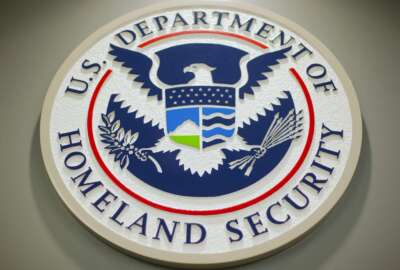The Problem with the Senior Executive Service
It's clear that the Senior Executive Service never became what its creators envisioned, says former DHS CHCO Jeff Neal. But in many respects, some of those hopes...
Commentary by Jeff Neal
Founder of ChiefHRO.com
& Senior Vice President, ICF International
This column was originally published on Jeff Neal’s blog, ChiefHRO.com, and was republished here with permission from the author.

The Office of Personnel Management announced it is restarting the Presidential Rank Awards program that was suspended last year with budget pressure cited as the reason. The news about Rank Awards reminded me I have planned to write about SES issues and address some of the problems with the SES today. Let’s start with a little history.
The SES was created by the Civil Service Reform Act of 1978. It replaced the GS-16, -17 and -18 “Supergrades” with a completely new system of hiring, classification and pay. It was intended to create a cadre of executives that, rather than having very specific program-related qualifications, would have broad executive management skills and be mobile across government.
The SES would have six pay levels, with rank in person rather than rank in position, to further encourage mobility and to facilitate their use in a wide variety of situations. In order to incentivize performance, SES members would be eligible for substantial annual bonuses and for Presidential Rank Awards. Currently, bonuses range from 5 percent to 20 percent of base pay. Rank awards were originally either $10,000 (later raised to 20 percent of base pay) for “Meritorious” awards or $20,000 (later raised to 35 percent of base pay) for “Distinguished” awards. Up to 5 percent of career SES can receive a Meritorious Rank Award. Only 1 percent can get a Distinguished Rank Award. The larger bonuses were part of the plan to have an at-risk component of SES compensation. (For more on the SES, the Congressional Research Service did a great review of the history of the SES that is available here).
So — how did that work out? Not very well.
Agencies did what most organizations do and tried to make the new system conform to their existing way of doing business. SES pay levels were often treated as grades, the higher pay levels were limited to certain positions, and so many technical qualifications requirements were placed on jobs that they were very much like the old Supergrades. Because the top SES pay rate was tied to Level III of the Executive Schedule used for senior political appointees, it did not go up at the same rate as the General Schedule. Pay compression became so bad that the top three SES pay levels were paid the same amount.
In 2004, the National Defense Authorization Act eliminated the pay levels, raised the pay cap to Level II of the Executive Schedule, and lowered the bottom end of the SES pay range by eliminating locality pay. The intent was that Senior Executives would earn pay raises through performance, Senior Executives could get higher pay, and agencies would see better results. Some agencies quickly took advantage of the demise of pay levels to “tier” their SES positions into 3 tiers. I suggested at the time (only half-joking) that the tiers be called GS- 16, GS-17 and GS-18.
The idea that SES pay could be raised seemed like a good idea, but it hasn’t worked out the way proponents had hoped.
True — some senior executives have higher pay (currently the max is $181,500). But — the overall result is that SES pay relative to GS-15s has not done well at all. In December 2004, the average pay for GS-15s was $119,143 and the average career SES made $142,276. That equates to 119.4 percent of GS- 15 pay. In December 2013, the average GS-15 salary had increased by $28,799 (24.2 percent) to $147,942. Average career SES pay has increased by $23,898 (16.8 percent) to $166,174. That equates to 112.3 percent of GS-15 pay. The “reform” that was supposed to make SES pay more competitive and make up the difference through performance-based pay raises resulted in SES members losing ground in a big way. In fact, average SES pay peaked in FY2010 at $167,765 and dropped to $167,198 in FY2011, $166,644 in FY2012, and $166,764 in FY2013. We are potentially headed toward a pay inversion where SES members will make less than GS-15s.
Why should we care? After all, I have heard a lot of people say SES members make very good money relative to the average American worker. Shouldn’t that be enough? The truth is comparing Senior Executive Service pay to average pay in the U.S. is a specious argument.
Comparison to the pay of the people they lead and to executives in the private sector is a far more accurate measure. By that yardstick, SES pay is too low to recruit top talent from outside government and the pay difference between GS-15 and SES is so small now that many superb GS-15s are losing interest in becoming SES. Why go for more responsibility, more headaches and more time at work for 12 percent more pay? On top of that, SES members are increasingly becoming the target of people who want to change how government works.
Recent proposals to suspend performance bonuses for executives in the Department of Veterans Affairs are a great example. Does the VA have issues? Yes. Should 400 SES members in VA be punished because some are not performing? No. How do we expect to attract top talent if the message they get coming in is that they cannot get a bonus regardless of how well they perform? How do we drive better performance at VA if we make compensation policies that incentivize high performers to go elsewhere to work?
The pay and bonus freeze, furloughs, and political attacks have taken their toll on the SES workforce. A survey by the Senior Executives Association revealed that 51 percent of SES members rated executive morale in their agencies as low or very low. More than a third (34 percent) were unhappy with their agencies’ performance-rating processes and thought they had gotten worse in the past year. There was widespread dissatisfaction with the growing pay compression between GS-15s and the SES. Low SES morale, coupled with pay that will not attract new talent to the SES, puts the government at risk of not being able to fill SES positions as vacancies occur. And vacancies are happening. More than 700 career SES members (about 10 percent) left government in FY2012 and again in FY2013, up from 581 in Fiscal 2009.
It is clear that the Senior Executive Service never became what its creators envisioned. In many respects, some of those hopes were not realistic.
The master manager/leader who can lead anything may be more fantasy than reality. Many executive roles require very specific skills and experience. Mobility doesn’t always occur, in part because people often like the work they do and the agency where they work. They do not see a reason to go elsewhere. I served in SES positions in three departments, but that is not the norm. We often see people concluding that mobility is good because a large number of high performing executives have been mobile. Perhaps the truth is that whatever characteristics cause a person to be mobile may be the same characteristics that make them better performers. If that’s the case (and I believe it is), then better assessments of SES applicants can help those folks float to the top.
Whatever the solution to improving the SES may be, suppressing pay, reducing or eliminating bonuses, and targeting SES members as the cause of the government’s problems are not the answer. It is time to have a real public policy debate about executive compensation in government, informed by facts and focusing on the steps we can take to ensure the government has the executive leadership it needs to carry out the vital operations our country needs to survive and thrive.
MORE COMMENTARY FROM JEFF NEAL:
Federal government as an employer — Is the glass half full or half empty?
Fixing the federal hiring process: Deus ex machina
Fear not: The case for shared services in government
Federal leadership development is not a luxury
Copyright 2014 by Jeff Neal. All rights reserved.
Jeff Neal is founder of the blog, ChiefHRO.com, and a senior vice president for ICF International, where he leads the Organizational Research, Learning and Performance practice. Before coming to ICF, Neal was the chief human capital officer at the Department of Homeland Security and the chief human resources officer at the Defense Logistics Agency.
Copyright © 2025 Federal News Network. All rights reserved. This website is not intended for users located within the European Economic Area.





